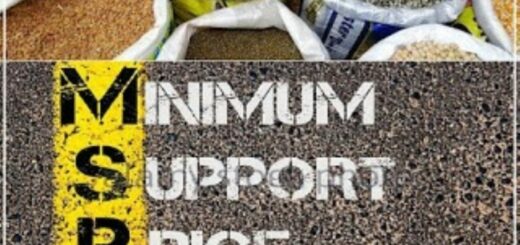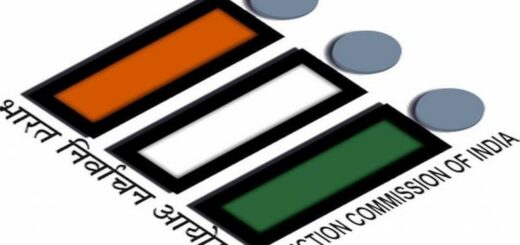National Current Affairs – UPSC/KAS Exams- 27th January 2020
The four phases of constitutional interpretation
Topic: Polity and Governance
In News: The Constitution of India came into force 70 years ago, on January 26, 1950. Republic Day, provides an opportunity to take a step back from political contestations about the Constitution and consider how the text has been interpreted by the courts over the last seven decades.
More on the Topic:
Text as phase one:
- In its early years, the Supreme Court adopted a textualist approach, focusing on the plain meaning of the words used in the Constitution.
- K. Gopalan v. State of Madras (1950) was one of the early decisions in which the Court was called upon to interpret the fundamental rights under Part III. The leader of the Communist Party of India claimed that preventive detention legislation under which he was detained was inconsistent with Articles 19 (the right to freedom), 21 (the right to life) and 22 (the protection against arbitrary arrest and detention).
- The Supreme Court decided that each of those articles covered entirely different subject matter, and were to be read as separate codes rather than being read together.
- Amongst the most controversial questions in Indian constitutional law has been whether there are any limitations on Parliament’s power to amend the Constitution, especially fundamental rights. In its early years, the Court read the Constitution literally, concluding that there were no such limitations.
Phase two, the structure:
- In the second phase, the Supreme Court began exploring other methods of interpretation. Appeals to the text of the Constitution were gradually overtaken by appeals to the Constitution’s overall structure and coherence.
- In the leading case of Kesavananda Bharati v. State of Kerala (1973), the Court concluded that Parliament’s power to amend the Constitution did not extend to altering its “basic structure,” an open-ended catalogue of features that lies within the exclusive control of the Court.
- When Parliament attempted to overturn this decision by amending the Constitution yet again, the Court, relying on structuralist justifications, decisively rejected that attempt.
- In this phase, the Court also categorically rejected the Gopalan approach in favour of a structuralist one in Maneka Gandhi v. Union of India (1978). Through this decision, the Court conceived of the fundamental rights as a cohesive bill of rights rather than a miscellaneous grouping of constitutional guarantees.
- The right to life was incrementally interpreted to include a wide range of rights such as clean air, speedy trial, and free legal aid. This paved the way for the Supreme Court to play an unprecedented role in the governance of the nation.
- What was common between the first two phases of the interpretive story was that significant decisions involving the interpretation of the Constitution were entrusted to Constitution Benches (comprising five or more judges of court) and were carefully (even if incorrectly) reasoned.
- There was limited scope for precedential confusion, since matters which had been decided by Constitution Benches and which demanded reconsideration were referred to larger Constitution Benches.
Third Phase:
- In the third phase, the Supreme Court’s interpretive philosophy turned far more result-oriented than it had ever been. The Court often surrendered its responsibility of engaging in a thorough rights reasoning of the issues before it. Two factors underpinned this institutional failure.
- First, the changing structure of the Court, which at its inception began with eight judges, grew to a sanctioned strength of 31; it is currently 34. It began to sit in panels of two or three judges, effectively transforming it into a “polyvocal” group of about a dozen sub-Supreme Courts.
- Second, the Court began deciding cases based on a certain conception of its own role — whether as sentinel of democracy or protector of the market economy. This unique decision-making process sidelined reason-giving in preference to arriving at outcomes that match the Court’s perception.
Phase four, purpose:
- We are currently in the midst of transitioning from the third phase of constitutional interpretation to the fourth. In the fourth phase, the Court has acknowledged as critical to its interpretive exercise the purpose for which the Constitution has been enacted. Many Constitutions attempt the task of entrenching a political compromise between the incumbents and challengers of the day.
- India’s Constitution, at its very inception, was different. In enacting the Constitution, the founders of our Republic expressed a sense of unease with the status quo and raised expectations of root-and-branch social revolution and transformation. The Court is now beginning to interpret the Constitution in accordance with its revolutionary and transformative potential.
- With about a dozen significant Constitution Bench decisions from the Supreme Court since September 2018, there has been a renaissance in decision-making by Constitution Benches. This includes the Court’s decisions striking down Section 377 and the criminal offence of adultery, and including the office of the Chief Justice of India within the scope of the Right to Information Act.
- However, facets of phase 3 continue to linger on in the courts. Cases that involve substantial questions of interpretation of the Constitution — such as the cases concerning the National Register of Citizens and the electoral bonds scheme — are still being adjudicated upon by benches of two or three judges. There remains a latent risk associated with phase 3, that the gains made in the early days of phase four could be lost.
Source: Hindu
Anti-Satellite (A-SAT) missile and the Air Defence Tactical Control Radar (ADTCR)
Topic: Defence and Security
In News: The Defence Research and Development Organisation (DRDO) displayed its Anti-Satellite (A-SAT) missile and the Air Defence Tactical Control Radar (ADTCR) during the 71st Republic Day parade.
More on the Topic:
- A-SAT Missile: It is an interceptor missile that destroys or jams satellites in space.
- There are two types of A-SATs, Kinetic A-SATs like ballistic missiles, physically strike an object in order to destroy it and Non-Kinetic A-SATs are the ones that use non-physical means to disable or destroy space objects, which include frequency jamming, blinding lasers or cyber-attacks.
- The theoretical maximum range of A-SATs is limited which means satellites above 20,000 km are out of range.
- The A-SAT missile was developed by the DRDO under Mission Shakti. Mission Shakti seeks to defend India’s space assets and thus aims at strengthening India’s overall security.
- India became the fourth country to acquire such technology after USA, Russia, and China.
- The A-SAT technology has a ‘hit to kill’ feature which is developed for the first time in India. It enables to destroy an enemy satellite by directly colliding with it with pinpoint accuracy.
- Air Defence Tactical Control Radar: Air Defence Tactical Control Radar (ADTCR) is used for volumetric surveillance, detection, tracking and friend/foe identification of aerial targets of different types and transmission of prioritised target data to multiple command posts and weapon systems.
- It is also capable of detecting very small targets and low flying targets.
Source: Hindu
Topic: International Affairs
In News: Palestinian officials threatened to withdraw from key provisions of the Oslo Accords, which define relations with Israel.
More on the Topic:
- The Oslo Accords are a set of agreements between the Government of Israel and the Palestine Liberation Organization (PLO): the Oslo I Accord, signed in Washington, D.C., in 1993; and the Oslo II Accord, signed in Taba, Egypt, in 1995.
- The Oslo Accords marked the start of the Oslo process, a peace process aimed at achieving a peace treaty based on United Nations Security Council Resolutions.
- The Oslo Accords created a Palestinian Authority tasked with limited self-governance of parts of the West Bank and Gaza Strip; and acknowledged the PLO as Israel’s partner in permanent-status negotiations about remaining questions.
- The most important questions relate to the borders of Israel and Palestine, Israeli settlements, the status of Jerusalem, Israel’s military presence in and control over remaining territories after Israel’s recognition of Palestinian autonomy, and the Palestinian right of return.
Source: Hindu
Rashtriya Uchchatar Shiksha Abhiyan
Topic: Government Policies
In News: The Ministry of Human Resource Development has approached the Prime Minister’s Office (PMO) to take notice of the alleged corruption in the implementation of the Rashtriya Uchchatar Shiksha Abhiyan (RUSA).
More on the topic:
- Rashtriya Uchchatar Shiksha Abhiyan is a Centrally Sponsored Scheme launched in 2013.
- Its aim was to increase enrolment in higher education by 30%.
- It primarily provides strategic funding to eligible State higher educational institutions.
- The RUSA, unlike other schemes, is not imposed on State governments in a one-size-fits all manner. Under RUSA, states and institutions have to give an undertaking expressing their willingness to the idea of reform.
- They should also agree to meet the States’ share of the cost. Accordingly, preparatory grants will be released to States to have the required systems, processes, and the technical support in place.
- The scheme is largely based on the conditional release of funds.
- It is linked to reforms in the key areas of governance, learning-teaching outcomes, reaching out to the unreached and infrastructure support.
Source: Indian Express
Global Talent Competitiveness Index
Topic: Reports and Indices
In News: India has moved up eight places to the 72nd position in the Global Talent Competitiveness Index (GTCI) 2020.
More on the Topic:
- The report stated that India’s GTCI score and GDP per capita are both lower than the other emerging market economies such as BRICS – Brazil (80th), Russia (48th), China (42nd), and South Africa (70th).
- India’s key strength relates to growing talent, due to its levels of lifelong learning and access to growth. However, more could be done to improve India’s educational system.
- The country’s highest-ranked sub-pillar is employability but the ability to match labour market demand and supply stands in contrast to the country’s poor “mid-level skills”, which result in a mediocre score in vocational and technical skills.
- India faces the challenge of attracting and retaining talent and the weak ability to overcome it. India has to strengthen the role of minorities and women to raise the level of internal openness in the country which would make it more appealing.
About Global Competitive Index:
|
Source: Hindu
Establishment of Chairs in the Name of Eminent Women in universities
Topic: Important Personalities in News
In News: On the occasion of National Girl Child Day, the Ministry of Women and Child Development has set up 10 Chairs in different fields with an aim to carry out research activities to encourage women.
More on the Topic:
- The initiative called Establishment of Chairs in the Universities in the name of eminent women administrators, artists, scientists and social reformers is being launched with the assistance of University Grants Commission (UGC).
- The main objective is to inspire women to pursue higher education and to achieve excellence in their area of work. This initiative of highlighting and celebrating women achievers of the country will motivate young girls and women towards higher studies.
- Initially, the chairs will be set up for a period of 5 years.
- Each chair will be funded by the Ministry of Women and Child Development (₹50 lakh per year).
- All the universities that are eligible to receive grant-in-aid from the UGC are eligible to apply for the establishment of the Chairs.
- Any scholar or academician in the age group of 55-70 years, with specialisation in their fields, will be eligible for the chair.
- The selected academicians will be appointed for a period of five years, which can be extended to another five years.
The chairs proposed by UGC and approved by the Ministry:
| S. No. | Subject | Proposed name of chair |
| 1. | Administration | Devi Ahilyabai Holkar: A proficient ruler and an erudite politician of Malwa; also known as Malwa queen |
| 2. | Literature | Mahadevi Varma: A freedom fighter, Hindi poet, academician |
| 3. | Freedom Fighter (North East) | Rani Gaidinliu: Naga spiritual and political leader who had led a revolt against British rule in India |
| 4. | Medicine & Health | Anandibai Gopalrao Joshi: India’s first woman physician |
| 5. | Performing Art | § Madurai Shanmukhavadivu Subbulakshmi: Indian Carnatic singer from Madurai, Tamil Nadu.
§ The first musician ever to be awarded the Bharat Ratna, India’s highest civilian honour. |
| 6. | Forest/Wildlife Conservation | Amrita Devi (Beniwal): She sacrificed her life along with her three daughters to save green trees being felled by the Maharaja of Jodhpur in Marwar, Rajasthan in 1730. |
| 7. | Mathematics | Lilavati: It is a treatise on mathematics, written by Indian mathematician Bhāskara II’s in 1150. |
| 8. | Science | Kamala Sohonie: The first Indian woman to receive a PhD in a scientific discipline and also paved the way for women to study at the Indian Institute of Science (IISc), Bengaluru. |
| 9. | Poetry & Mysticism | Lal Ded: Played a lead role in the creation of Vatsun style of mystic poetry. |
| 10. | Educational Reforms | Hansa Mehta: A social activist, educator and eminent writer. |
Source: PIB
NISHTHA Programme
Topic: Government Policies
In News: NISHTHA, the National Initiative for School Heads and Teachers Holistic Advancement programme was mentioned by Union HRD Minister in a recent event.
More on the Topic:
- NISHTHA is the world’s largest teachers’ training programme of its kind in the world.
- It has been launched to improve Learning Outcomes at the Elementary level.
- The basic objective of this massive training programme is to motivate and equip teachers to encourage and foster critical thinking in students.
- The initiative is first of its kind wherein standardized training modules are developed at national level for all States and UTs.
- However, States and UTs can contextualize the training modules and use their own material and resource persons also, keeping in view the core topics and expected outcomes of NISHTHA.
- Features of the Programme: Activity based modules including educational games and quizzes, Social-emotional learning, motivational interactions, team building, preparation for school based assessment, in-built continuous feedback mechanism, online monitoring and support system, training need and impact analysis (Pre and Post training).
Source: Hindu















